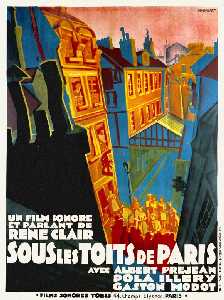 |
| Robert Donat in The Ghost Goes West |
Cast: Robert Donat, Jean Parker, Eugene Pallette, Elsa Lanchester, Ralph Bunker, Patricia Hilliard, Everley Gregg, Morton Selten, Chili Bouchier, Mark Daly, Herbert Lomas, Elliott Mason, Hay Petrie. Screenplay: Robert E. Sherwood, based on a story by Eric Keown. Cinematography: Harold Rosson. Art direction: Leila Rubin. Film editing: Harold Earle. Music: Mischa Spoliansky.
The premise of The Ghost Goes West, René Clair's first English language feature, is sound: An American businessman buys a castle in Scotland and ships it to Florida along with its resident ghost. Robert Donat is the handsome leading man in the double role of the ghost and his present-day descendant. Eugene Pallette, who plays the businessman, is one of the best character actors in a golden age for character actors. And Jean Parker is attractive as his daughter, who is romanced by both the ghost and his descendant. Yet somehow the movie keeps falling flat. It may have something to do with the screenplay by Robert E. Sherwood, a writer not known for the light touch needed for the blend of screwball and romantic comedy that the premise deserves. There were also some tensions between Clair and the producer, Alexander Korda, who originally planned the film as a vehicle for Charles Laughton, which may explain why Laughton's wife, Elsa Lanchester, is billed fourth for a role that has only a few minutes of screen time. When Korda decided he needed more romance in the film, the part was offered to Laurence Olivier, who was unavailable, so Donat stepped in. Tipping the film in the direction of romance also resulted in the loss of some of its satiric edge, aimed at American millionaires like William Randolph Hearst looting Europe and creating their own castles in the United States. Still, The Ghost Goes West has dryly clever moments that make it watchable and often amusing.




